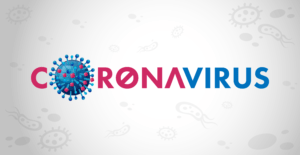Written By:
 Adam H. Rosenblum
Adam H. Rosenblum
Your Dedicated & Trusted Legal Team
3 Generations & 100+ Years of Combined Legal Experience

Covid-19 and the forced government shutdown created financial havoc for many small business owners. The CARES Act was passed to relieve some of that stress, and many individuals applied for loans just to get by and keep their small businesses afloat. This article will explain what PPP is, who qualifies for forgiveness, and other options available when loan forgiveness isn’t, including bankruptcy.
The PPP loan, also known as the Paycheck Protection Program, was started in 2020 when the Trump administration created it as part of the CARES Act. Since then, billions of funds have been sent out to help the American people whose businesses qualified. From 2020 through 2021, Americans had three times to apply for PPP loan assistance if they met the requirements. People who got the loan could use it to cover mortgage interest, rent, utilities, worker protection costs, and payrolls, including workers’ benefits.
Who Qualified for the PPP Loans?
There were both first- and second-round requirements for those seeking PPP loans from the government. First-round requirements covered:
- People who had business before February 15th, 2020
- Small to medium-sized business with fewer than 500 employees
- Accommodation services with fewer than 500 employees
- Food services with fewer than 500 employees
- People who identified as self-employed
- Gig/freelance workers
- Sole proprietors of limited companies
- Independent franchises
- Nonprofits that were tax exempt
- Independent news organizations with fewer than 500 employees
Second-round requirements were businesses with fewer than 300 employees and a proven 25% decrease in revenue during one quarter in 2020.
If a person qualified, it was good news for them to get much-needed help during the hard times of COVID-19. Of course, there were terms and conditions that people needed to be aware of when receiving the loan. For starters, all PPP loans had a fixed interest rate of 1%. If the person got the loan before June 5th, 2020, it would have to be paid in two years. If the loan was received after that date, it would have to be paid in 5 years. The PPP loans were also eligible for loan forgiveness.
Loan Forgiveness
Loan forgiveness is attractive to borrowers of the PPP loan, and people today are still eligible. Business owners can be forgiven for the entire loan if they prove they spent 60% of the funds on payroll costs. Those generally include gross pay, wages, bonuses, etc. The two requirements for the full loan forgiveness were that the full-time staff did not decline in size and employers did not cut the salaries or wages of the employees. If salaries were cut, then the loan forgiveness would then be reduced. The time frame for the loan forgiveness was between 8-24 weeks from when the person received the loan.
If an individual is seeking out loan forgiveness, they should:
- Contact their lender for the correct loan forgiveness application.
- Collect and organize documentation. These documents can be extensive. Hopefully, all recordkeeping has been well kept over the years. For example, proof of payroll, expenses, and non-payroll costs are required.
- Send all necessary forms to the lender. They will review and decide your loan forgiveness status.
PPP Loan Fraud and Increased Enforcement
The government issued PPP loans quickly because of the crisis caused by COVID-19. Unfortunately, the swift outflow of payments contributed to an overwhelming number of fraudulent PPP loan cases. In North Carolina, a father and son duo defrauded the government of $1.7 million in PPP loans they acquired. They submitted multiple PPP loan applications and made unlawful transactions, including giving family members $30,000. The father was sentenced to four years in prison, and the son got an 87-month sentence.
In southern California, a man defrauded the government out of $27 million in a PPP loan scheme when he submitted 27 separate PPP loan applications to four banks in April and June 2020. He did this under the guise of eight businesses he owned by submitting fraudulent documents to secure the loans. The Californian was convicted of bank fraud, providing false statements to a financial institution, and money laundering. He was sentenced to 11 years for the crimes.
To date, the Fraud Section that leads the Criminal Division prosecution of PPP loan schemes has prosecuted over 192 defendants in more than 121 criminal cases. They have also seized over $78 million in cash, luxury items, and real estate properties, all obtained by funds from fraudulent PPP loan schemes.
In August of 2022, President Biden signed bills that would give the government more time to investigate and prosecute additional fraudulent behavior involving PPP loans. The Bank Fraud Enforcement Act and COVID-19 EIDL Fraud Statute of Limitations Act provides for a 10-year statute for the government to look into criminal cases and civil cases regarding PPP loans. It is estimated that billions could be attributed to PPP loan fraud.
It is estimated that billions could be attributed to PPP loan fraud
Due to increased loan enforcement and the government cracking down on misuse of PPP loans, many are currently left wondering whether they meet the Small Business Administrations’ qualifications for PPP loan forgiveness. Questions have been raised about loan forgiveness and fraudulent behavior, with some calling for more scrutiny of the forgiveness process. Out of the 11.4 million PPP loans, about 1 million remain unforgiven, with the majority of those loan borrowers representing independent contractors.
Relief Through Bankruptcy
If not forgiven by the Small Business Administration, PPP loans may still qualify for forgiveness through the bankruptcy process. Most small businesses would likely be eligible for Chapter 11 bankruptcy.
A chapter 11 bankruptcy is commonly referred to as “reorganization” bankruptcy. Chapter 11 gives business owners a chance to continue running the businesses while paying back their debts over a period of time. To qualify, these requirements need to be met:
- Fees: They will need to be able to afford the filing and miscellaneous administration fees. Currently, the filing fee is $1,167 and miscellaneous fees are $500.
- Credit Counseling: A person must attend an approved credit counseling program within 180 days of the bankruptcy filing. If the person has made a repayment plan during counseling, they need to attach it to their petition.
- Disclosure Statement: This must be filed with the courts. This statement lays out all the information needed for the creditors to make informed decisions for the reorganization plan.
- The Plan: The person in debt must make a plan detailing how the debt will be paid back. The other option is to state an intention to file at the appropriate time discussed in the bankruptcy code.
Filing for Chapter 11 bankruptcy is often a complicated process with many requirements regarding eligibility. For more information about what filing for bankruptcy entails, please refer to our article here: https://rosenblumlaw.com/our-services/bankruptcy-nj/chapter-11/
How Can Rosenblum Law Help?
Rosenblum Law uses technology, combined with years of experience, to review your situation and determine the best possible resolution. Chapter 11 may be one option available to those struggling to repay a PPP loan, but there are other alternatives (like the forgiveness program). Bankruptcy is not necessarily the only way to handle these cases. So, while it’s not easy to face the financial damage done by the COVID-19 pandemic, addressing the situation ahead of time is much more favorable than facing the consequences of a PPP loan issue alone. Call us today at 888-346-5864 for an initial, free consultation.
 Adam H. Rosenblum
Adam H. Rosenblum
About The Author
Adam is the founding attorney and principal of Rosenblum Law. With more than two decades of legal experience in numerous areas of law practice, his primary focus is law firm management and business development.
Read MoreLatest from Our Blog



Editorial Standards
Rosenblum Law is committed to delivering informative content of the highest quality. All content is subject to our rigorous editorial standards for relevance, accuracy, sourcing, and objectivity. Everything is fact-checked by an editor and reviewed for legal soundness by one of our practicing attorneys prior to being published.
How to Cite Rosenblum Law’s Article
APA
Adam H. Rosenblum (Oct 13, 2022). 4 Bad Reasons to Delay Filing for Bankruptcy. Rosenblum Law Firm, https://rosenblumlaw.com/bad-reasons-to-delay-bankruptcy/
MLA
Adam H. Rosenblum "4 Bad Reasons to Delay Filing for Bankruptcy". Rosenblum Law Firm, Oct 13, 2022. https://rosenblumlaw.com/bad-reasons-to-delay-bankruptcy/
